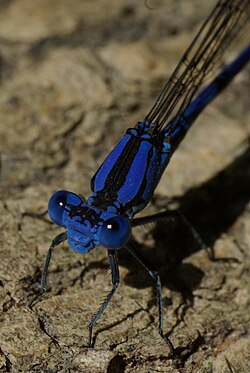| Springwater dancer | |
|---|---|
 | |
| Scientific classification | |
| Domain: | Eukaryota |
| Kingdom: | Animalia |
| Phylum: | Arthropoda |
| Class: | Insecta |
| Order: | Odonata |
| Suborder: | Zygoptera |
| Family: | Coenagrionidae |
| Genus: | Argia |
| Species: | A. funebris |
| Binomial name | |
| Argia funebris (Hagen, 1861) [2] | |
 | |
| Range of A. funebris [3] | |
The springwater dancer (Argia funebris) is a damselfly of the family Coenagrionidae.
